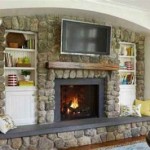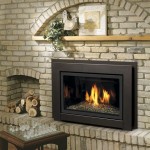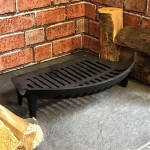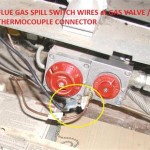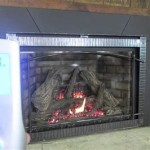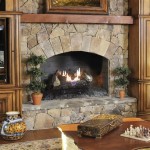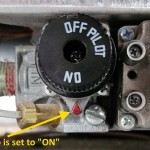```html
Wall Mounting a TV Above a Gas Fireplace: Considerations and Best Practices
Mounting a television above a gas fireplace is a popular design choice that can create a visually appealing focal point in a living space. This configuration saves floor space and offers a comfortable viewing experience. However, successfully executing this installation requires careful planning and adherence to specific guidelines to ensure both the safety and longevity of the television and related components.
The heat generated by a gas fireplace can pose a significant threat to the delicate electronics within a television. Excessive heat exposure can lead to component failure, screen damage, and a reduced lifespan for the device. Therefore, understanding the potential risks and implementing appropriate mitigation strategies is crucial before undertaking this type of installation.
Furthermore, building codes and manufacturer warranties should be carefully reviewed prior to installation. Modifications that violate these regulations can result in costly repairs, voided warranties, and potential safety hazards. Consulting with qualified professionals, such as electricians, HVAC technicians, and certified installers, is highly recommended to ensure a safe and compliant installation.
Understanding the Heat Factor
The primary concern when mounting a television above a gas fireplace is the heat emitted by the fireplace. Gas fireplaces, even those designed for decorative purposes, produce significant heat that can rise and accumulate near the television. This radiant and convective heat can damage the sensitive electronic components within the television, leading to performance issues and premature failure.
The amount of heat produced by a gas fireplace varies depending on its BTU (British Thermal Unit) rating, the size of the fireplace, and the duration of use. A fireplace with a higher BTU rating will generate more heat. Similarly, a larger fireplace with a wider opening will radiate more heat into the surrounding environment.
Before proceeding with the installation, it is essential to measure the temperature above the fireplace when it is operating at its highest setting. This can be accomplished using a digital thermometer with a remote probe. The probe should be placed at the intended location of the television to accurately assess the heat levels. Generally, televisions are designed to operate within a specific temperature range, typically between 0°C (32°F) and 40°C (104°F). Exceeding this range can cause damage.
If the temperature above the fireplace exceeds the television's operating range, mitigation strategies are necessary. These strategies may include installing a heat shield, increasing the distance between the fireplace and the television, or modifying the fireplace itself. The effectiveness of these measures should be verified with further temperature measurements.
Mitigation Strategies: Deflecting and Dissipating Heat
Several strategies can be employed to mitigate the effects of heat when mounting a television above a gas fireplace. The specific approach will depend on the fireplace design, the room layout, and the desired aesthetic.
Heat Shield Installation: A heat shield is a physical barrier designed to deflect heat away from the television. It is typically constructed from a non-combustible material such as metal or stone. The heat shield can be installed above the fireplace opening to redirect the rising heat away from the television.
The effectiveness of the heat shield depends on its size, material, and placement. It should be large enough to cover the entire width of the fireplace opening and extend sufficiently to protect the television. The material should be highly reflective to minimize heat absorption. Proper installation is crucial to ensure that the heat shield effectively redirects the heat and does not create a fire hazard.
Increasing the Distance: Increasing the vertical distance between the fireplace and the television is another effective way to reduce heat exposure. The further the television is from the fireplace, the less heat it will be exposed to. This can be achieved by mounting the television higher on the wall.
However, increasing the distance can impact the viewing angle and overall aesthetic. It's important to consider the eye level of viewers when determining the optimal mounting height. A higher mounting position may require tilting the television downward to improve the viewing experience. The room size and seating arrangement must be taken into account to ensure comfortable viewing.
Fireplace Modification: In some cases, modifying the fireplace itself can help reduce heat output. This may involve installing a damper to control the airflow or reducing the size of the flame. However, any modifications to the fireplace should be performed by a qualified technician to ensure that they do not compromise its safety or efficiency.
Before making any modifications, it is essential to consult with a fireplace professional to assess the feasibility and potential impact. Some modifications may require permits or violate local building codes. Choosing a fireplace with a lower BTU output during the initial installation is a proactive approach to minimizing heat issues.
Ventilation Enhancement: Improving ventilation around the television can also help dissipate heat. This can be achieved by ensuring adequate airflow behind the television and avoiding enclosed spaces that trap heat. Using a ventilated wall mount can promote airflow and prevent heat buildup.
Avoid placing objects that obstruct airflow around the television. Consider using fans to circulate air and help dissipate heat, although this may be less aesthetically desirable in many settings.
Structural Considerations and Mounting Procedures
Beyond heat mitigation, structural considerations are paramount for ensuring a safe and secure television installation. The wall must be capable of supporting the combined weight of the television and the mounting hardware. Identifying wall studs and using appropriate mounting hardware is essential to prevent the television from falling.
Stud Identification and Mounting: Wall studs are vertical beams that provide structural support. The television mount should be securely attached to at least two wall studs to distribute the weight evenly. A stud finder can be used to locate the studs behind the wall. The distance between studs is typically 16 or 24 inches. If the studs are not located in a convenient position, a bridging board can be installed horizontally between the studs to provide a secure mounting surface.
Avoid mounting the television solely to drywall, as drywall is not strong enough to support the weight. Using drywall anchors may seem like a viable solution, but they are not recommended for heavy objects like televisions, especially when mounted above a heat source like a fireplace. The heat may further weaken the drywall and anchors over time.
Mount Selection: Selecting the appropriate television mount is crucial for a successful installation. There are various types of mounts available, including fixed mounts, tilting mounts, and full-motion mounts. The choice depends on viewing preferences and the desired flexibility. Fixed mounts are the simplest and most affordable option, providing a stable and secure mounting position. Tilting mounts allow you to adjust the vertical angle of the television to improve the viewing experience. Full-motion mounts offer the greatest flexibility, allowing you to swivel and extend the television in multiple directions.
When selecting a mount, ensure that it is compatible with the television's VESA (Video Electronics Standards Association) mounting pattern. The VESA pattern refers to the standardized hole pattern on the back of the television used for mounting. The mount should also be rated to support the weight of the television. Overloading the mount can compromise its stability and pose a safety hazard.
Cable Management: Proper cable management is essential for a clean and organized installation. Run all cables through the wall to conceal them and prevent them from dangling. Use cable ties or sleeves to bundle the cables together and keep them tidy. Consider installing a cable pass-through plate in the wall to provide a convenient entry and exit point for the cables. Avoid running cables directly behind the fireplace, as the heat can damage them.
Ensure that all electrical connections are made in accordance with local electrical codes. It is recommended to consult with a qualified electrician to ensure that the electrical wiring is safe and up to code. Installing a recessed electrical outlet behind the television can provide a clean and professional look.
Professional Installation: Given the complexities and potential risks involved in mounting a television above a gas fireplace, professional installation is highly recommended. Certified installers have the expertise and experience to ensure a safe and compliant installation. They can assess the structural integrity of the wall, identify potential heat issues, and recommend appropriate mitigation strategies. They can also properly mount the television, manage the cables, and configure the settings to optimize the viewing experience.
While professional installation may incur additional costs, it can provide peace of mind and prevent costly mistakes. The cost of professional installation is a worthwhile investment compared to the potential damage and safety hazards associated with a DIY installation.
```
Can I Mount My Tv Above The Fireplace

Can I Mount My Tv Above The Fireplace

Should I Mount A Tv Over Hole In The Wall Gas Fire Rigbys

Pros And Cons Of Mounting Your Tv Over Fireplace Vancouver Gas Fireplaces

ᑕ❶ᑐ What To Consider Before Mounting A Tv Above Fireplace

Mounting Your Tv Above Fireplace Best Practices And Tips Direct Fireplaces

Mounting Your Tv Above Fireplace

Can I Hang A Tv Over My Fireplace Woodlanddirect Com

ᑕ❶ᑐ What To Consider Before Mounting A Tv Above Fireplace

3 Myths About Mounting Tvs Over Fireplaces Monmouth County
Related Posts

